
Democracy Now! is broadcasting from Washington D.C., reporting on UNITY 2004, a convention of journalists of color—it’s the largest gathering of journalists in the United States. While people of color represent 40 percent of the United States population and African Americans make up 60 percent of the D.C. population, a study released this week by UNITY found that just 10.5 percent of Washington’s newspaper press corps are journalists of color. And journalists of color face significant challenges in gaining parity and fighting racism in the newsroom.
The Bush campaign came under criticism earlier this week for engaging in racial profiling of a journalist in Arizona. The campaign insisted on knowing the race of a photographer of Indian ancestry from the Arizona Daily Star before she was allowed to photograph an event featuring Vice President Dick Cheney. The paper refused to tell the campaign.
We’re joined today by some of the leaders of UNITY, which represents 7,000 media professionals of color: Patty Talahongva, president of the Native American Journalists Association, Mae Cheng, president of the Asian American Journalists Association, Herbert Lowe, president of the National Association of Black Journalists, Ernest Sotomayor, president of UNITY, and Democracy Now! co-host Juan Gonzalez, out-going president of the National Association of Hispanic Journalists. [includes rush transcript]
Transcript
AMY GOODMAN: This is Democracy Now! The War and Peace Report. I’m Amy Goodman with Juan Gonzalez.
JUAN GONZALEZ: Amy, good to see you again. I have been missing in action for a few weeks and I had to miss the Democratic Convention, but I was busy doing the final arrangements for the convention that’s occurring here, our own convention of journalists. As I said, we have 7,000 people — more than 7,000 — coming to here to D.C. Convention Center for the rest of the week to discuss a lot of very pressing issues of concern to journalists of color, as well as to the general media industry.
AMY GOODMAN: Juan, this is truly astounding. We’re here in Washington, D.C., for the next three days broadcasting from the UNITY 2004 Convention. The fact that this is the largest gathering ever of journalists, and it’s sponsored by the four major journalist organizations. We are going to spend the hour in a conversation with the presidents of all of the organizations, National Association of Black Journalists, National Association of Hispanic Journalists, which you are the outgoing president of —
JUAN GONZALEZ: I’ve got four more days of my term.
AMY GOODMAN: As well as the Asian American Journalists Association, Native American Journalists Association. We a few weeks ago played a major address you gave around the issue of diversity in journalism as well as media concentration. We’re joined in this segment of our program by Mae Cheng, president of the Asian American Journalists Association, and Herbert Lowe, president of the National Association of Black Journalists. Interesting, three of the five presidents are from Newsday.
HERBERT LOWE: Yes.
MAE CHENG: That’s correct.
HERBERT LOWE: Mae’s actually the editor.
AMY GOODMAN: So, Herb, be careful what you say.
MAE CHENG: And Juan’s our competitor.
AMY GOODMAN: So at least I know there won’t be any whispering between you. You won’t be sharing secrets here. Juan, lay out the purpose of this conference, and what it took to put this convention on?
JUAN GONZALEZ: Well, all of the associations have had conventions now, for more than 20 years, I think.
HERBERT LOWE: We’re celebrating our 30th anniversary.
JUAN GONZALEZ: N.A.B.J. is the oldest of the national groups.
AMY GOODMAN: 30th anniversary.
HERBERT LOWE: Next year in Atlanta.
JUAN GONZALEZ: And back in the late 1980’s, we began a process, some of us in the different associations, to at least begin getting the boards of the different groups to meet. Out of that developed the idea, well, we all have annual conventions anyway, many of the issues of each of the groups are very similar, why don’t we attempt to have a joint convention. That happened for the first time in Atlanta in 1994. It took a lot of — it took years of effort to put it together, and then finally, that was repeated again in Seattle in 1999, where there were I think a little over about 6,000 people.
AMY GOODMAN: That was an amazing convention.
JUAN GONZALEZ: And so this is actually the third such effort, and the point that we have been trying to make, even though journalists of color are putting it together, because all of the news executives and many other journalists come, either as speakers or whatever, we end up having really the largest convention of journalists, and for instance, the Gannett newspaper chain is sending all of the editors of every one of their 100 newspapers in the United States and England to attend the UNITY convention and everyone from Dick Parsons of Time Warner and Arthur Sulzberger with The New York Times. A lot of the top executives come. The most important thing are the issues that are discussed and the panels and workshops and in the major sessions, and the training that goes on. There’s a lot of professional development. Today all day there’s professional development training where hundreds of journalists are, you know, honing their skills.
AMY GOODMAN: And President Bush, John Kerry and General Colin Powell will be addressing the UNITY Convention?
JUAN GONZALEZ: Yes, at different times in the next week, each one of them will be addressing.
AMY GOODMAN: Yes. Well, there has been a major issue that’s just come up, speaking of Bush. Read it in the headlines yesterday on the campaign trail. The Bush re-election campaign came under criticism after the campaign insisted on knowing the race of a photographer from the Arizona Daily Star before she was allowed to photograph the event, which was featuring Dick Cheney. The paper refused to tell the campaign. A spokesperson for the campaign defended the request as an appropriate security measure, but the managing editor of the Arizona Daily Star, Terry Haight said, one has to wonder what they were going to do with the information, because she has Indian ancestry, were they going to deny access? I don’t know. Mae Cheng, you are president of the Asian American Journalists Association.
MAE CHENG: We have been speaking out about that incident. We think it smacks of racism. It’s nothing short of racial profiling. They could have simply just asked for her Social Security number and date of birth and done a security check just based on the information. They did not have to go and ask what her race was. I guess they looked at her name and thought it was suspicious, whatever that is, and we just can’t have government acting like that.
AMY GOODMAN: And, so what is the Asian American Journalists Association demanding?
MAE CHENG: Well, we are trying to bring attention to this issue. We’re trying to be as vocal about it as we can, so that we hope that that was the first and a last incident of something like this. We have a lot in our membership. We have a lot of South Asian journalists. We have East Asian journalists. We have South Asian journalists. We have Southeast Asian journalists. We have Pacific Islanders, and we have journalists from the Middle East. We would hate to see this happen again to another one of our journalists.
AMY GOODMAN: How large is the Asian American Journalists Association?
MAE CHENG: It’s now 2,200 members.
HERBERT LOWE: I would like to say a couple of things. One, we are journalism organizations, and this is bad for journalism. It’s bad for the First Amendment. The issue is we want to be able to present the best case to our communities, what is happening, where our government leaders are going, and if they care about race, if the Secret Service/White House cares about race, they should be caring about — far too few of our members get to cover the president, get to cover the Department of State. We’re announcing something later today regarding White House — I’m sorry, the Capitol Press Corps and lack of diversity. So as journalist organizations we believe that it is not necessary — if you need to do — we understand there’s need for protection for our leaders. We understand that we want to do no more, no less than what our — what other colleagues are doing. So, if you are not asking for anybody else’s race, then don’t ask for ours either. What — it is not just about Asians and the same thing could happen to us, him, or you. Or white journalists, any white journalist. It’s not acceptable because it is bad for journalism. Second, I would just want to reemphasize that when the president or the secretary or the senator are running around the country talking to press all the time, they should be able to look out and see that workplace diversity is not happening in the media. And they should speak out about that as well.
JUAN GONZALEZ: Herb, I want to interrupt, because, you know, A.A.J.A. has about 2,000 members, the National Association of Hispanic Journalists has a little over 2,000 members, but the largest organization in the alliance is N.A.B.J., the Black journalists with 4,600 members now. Could you — it would be interesting for those people who don’t know, to talk a little bit about the pioneering history of N.A.B.J., in terms of what it has been able — the impact it has had on the industry?
HERBERT LOWE: Well, in 1975, 44 Black men and women got together and actually put their name on a list. There were about 100 people in the room here in Washington, D.C., and decided that they need an advocacy group for journalists of color, for Black journalists at the time. That was still the first generation, your generation of journalists who had come in service of the integration and the Kerner Report in 1968 and deciding — that unfortunately some of the same issues we are facing today, they were facing then, but far too few are not in association, and so right away, they were able to make it clear that we want to have access, equal access to opportunities, the same kinds of beats and editorships that all of us agree that we wanted to go for when we came out of college. And I think that if there’s any legacy that we could have, any guidance or leadership that we could have based on our size and numbers, to me, Juan knows that I have not been really trumpeting our 43% increase in membership this past year, but because I think it’s all about just being able to just make sure we are a year-round organization fighting for Black journalists, fighting for all journalists of color, fighting for better journalism. And so we, the fact that — Juan is my hero. He has been able to do great things with the Parity Project. She’s got the journalism J Camp. You know, I’m looking for things to steal from them. Okay, that’s a great idea. That’s a great idea. To me, it’s not a competition. It’s simply if they have a great idea, we want to do so, and if we can help in any way, we want to be able to do so.
MAE CHENG: You know, it’s great to have these partners, because it really amplifies our voice, you know. So it’s not just 2,200 members of A.A.J.A. speaking out about this incident with the photographer, you know. It’s an alliance of organizations speaking on it. You know, for A.A.J.A., we still face a lot of stereotypical coverage. This year, we spoke out about a Details magazine article that was supposed to be a parody comparing gays to Asians. And it just wasn’t funny at all. In their next issue, they ran a long an apology. But it’s sad that we still have to do something like that in this day and age.
JUAN GONZALEZ: Yeah, I also think one of the important things, as Mae was saying, about the ability to have all of the organizations speak with one voice is that, you know, we have had a problem in terms of the issue of integration of the nation’s press corps, not just in the mainstream and corporate media, we have had it in the progressive or left media in the country, whether you go to The Nation, or Mother Jones or any of the other major outlets. There’s a problem in terms of who is producing the news, and how they’re reporting it, and you know, there’s a lot of young people now they call this identity politics. They think it is passe, but they don’t understand that there’s been a long battle in American history. Native Americans. The first Native American newspaper in the United States was in the 1820s, The Cherokee Phoenix, founded in Georgia. You know, The Freedom’s Journal in 1827, the first African American newspaper. The Golden Hills News in San Francisco in 1854, the first Asian American newspaper. There’s a long history of journalism by people of color who were excluded and marginalized by the existing white media. And whether it’s in the mainstream or corporate media or in the progressive or left media the issue has still not been fully addressed. Diversity of voices means giving arenas for expression for all peoples in the United States. So, we’re — what something like this does, is it forces everyone to really recognize the needs in American journalism and the other thing is people keep forgetting, they don’t look at the demographics. People of color now represent 30% of the population of the United States. By 2050, white people in the United States will be a minority. People of color will be the majority of the United States. The problem is that ownership, and this is why one of the things that I think is very important, that all of us in UNITY, UNITY was one of the plaintiffs in the Prometheus Radio Project lawsuit that was recently in the Court of Appeals in Philadelphia ruled on.
AMY GOODMAN: Juan, let’s talk about that issue of both diversity and media monopoly when we come back from our break. We’re at UNITY 2004, the convention is kicking off today, really last night there was a big town meeting. We’re going to be speaking with the president of the American Association of Native American Journalists, specifically the organization called the National Association of the Native — the Native American Journalists Association, as well as the president of UNITY 2004. We’re speaking with now Mae Cheng with the Asian American Journalists Association. She’s president, and Herbert Lowe, president of National Association of Black Journalists. We’ll be back in a minute.
AMY GOODMAN: This is Democracy Now! Democracynow.org. The War and Peace Report. I’m Amy Goodman, here with Juan Gonzalez. We’re broadcasting from Washington D.C. from the largest gathering of North American journalists in U.S. history, sponsored by the four leading journalists of color organizations, the National Association of Hispanic Journalists, National Association of Black Journalists, Native American Journalists Association, and Asian American Journalists Association. We are now joined by the president of the Native American Journalist Association, Patty Talahongva, as well as the president of UNITY which is the major umbrella organization of the four journalists’ organizations I just named, Ernest Sotomayor is president of UNITY, and Juan is president of the National Association of Hispanic Journalists. Juan you were talking about media monopoly and diversity.
JUAN GONZALEZ: Right, well just to conclude I was mentioning one of the impacts UNITY has been able to have we became the plaintiffs in this Prometheus Radio Project lawsuit that really remanded the FCC. Our organizations began to raise questions about the process of the FCC, and we tried to get them to at least have more public input and make sweeping changes and now the suit is held up and it will probably have to wait until after the election and who knows who will head the FCC after the election.
AMY GOODMAN: His father’s going to be speaking.
JUAN GONZALEZ: Yes, Secretary Powell will be speaking in the afternoon. I think the key thing through having this alliance is having a voice and force within the news industry. Right now the journalists’ of color hold hope for reform of the news industry from within. White journalists, even those that are dissatisfied with their situation and with the kind of coverage they’re forced to cover, they’re still not as organized as we are. And in the newsroom the only ones that are willing to stand up to the editor about things that are wrong are the journalists’ of color. They’re used to getting the short end of the stick, they’re used to being misrepresented and they’re the first to speak out.
AMY GOODMAN: Ernest Sotomayor.
ERNEST SOTOMAYOR: One of the things we do is stand out as advocates, which to some is a dirty word, a word they shy away from. As Juan said, one of the things our organization does is stand up and say “This is wrong.” That scares a lot of people. One of the things you’re taught at school when you’re starting out is that you want to be balanced and you want to be impartial. You need to understand that we have an obligation as journalists to make our profession as good as it can be, make our coverage as good as it can be. We have organizations like the Society of Professional Journalists that have been around a long time and they advocate for Good Sunshine laws, Freedom of Information laws, the Court Close hearings, they will go to court to get it opened up. The New York Times fought the presidency — the institution of the United States government on the Pentagon Papers. This is advocacy. It’s meant to make journalism better. It’s meant to get our society open and make it transparent. What we’re doing is advocating for good journalism here. We’re advocates. We’re not going to shy away from that that. We’re not going to hide behind a label. We’re not just lurking here. We’re advocates and we think it’s better. We think it’s everyone’s obligation.
AMY GOODMAN: You’re releasing a major report today, UNITY, 2004.
ERNEST SOTOMAYOR: Yes, Diversity in the Washington Press Corps.
AMY GOODMAN: Did you lay out some of your finds?
ERNEST SOTOMAYOR: Generally, we have known for a long time, anecdotally, we have been able to say that diversity in the press corps in Washington and not just here, but throughout the nation and in bureaus in state capitals all over the nation, really, it’s low. Diversity is very important. What the study found is that we only had 10.5% people of color among the newspaper bureau reporters and journalists in Washington, D.C. Overall, in the newspaper industry, we have about 12.5%, that’s been climbing very, very slowly since the first surveys were taken in 1978. As Juan mentioned, we make up a third of the population. People of color in this country. Now, you can say — that’s a horrendous disparity when you consider we only have 10% of the people covering Washington and we have a third of the population. That’s their audience. We have to think about that in that context. They’re reporting on our national government, national, international affairs. They’re reporting out to a population that is much, much more diverse and how you can really present the views of that population with this kind of lack of diversity is really not acceptable.
AMY GOODMAN: Patty Talahongva, you are president of the National Native-American Journalists’ Association. You’re based in New Mexico. Can you talk about the major issues your organization has taken on, as a journalist?
PATTY TALAHONGVA: Our fight is to hold up this boulder from crushing us, because our voice as Native people in general is not heard. I mean, at the Democratic National Convention, when Obama was talking about all of the people of color, he left out Native Americans. And it just boggles my mind that we’re always, always forgotten. When it comes to reporting stories, zero are on our people, and yet we have a huge impact on our country because of the treaties with the U.S. Government which makes our people sovereign nations, there’s just all of this room for misinformation out there, and we see it all the time. We see it out there in stories. One of the biggest stories that are not being covered right now is the Individual Indian Trust Money Fund Account. That’s bigger than Enron and any of these Fortune 500 whatever, problems that we’re having now in the financial world. Where we see this on a daily basis. That should be on headline news every day.
AMY GOODMAN: Explain why?
PATTY TALAHONGVA: This is the Interior Department and under President Clinton, former Interior Secretary, Bruce Babbitt was held in contempt of court, under President Bush, Secretary Gayle Norton has been held in contempt of court. What has happened is this Trust Fund mismanagement case affects native people all across the country. These are individual people who have land holes and they lease the lands out, but under the B.I.A. —
AMY GOODMAN: The Bureau of Indian affairs.
PATTY TALAHONGVA: The Native people say, “Watch out, it’s going to be the Bureau of Iraqi Affairs soon.” They felt back then, whatever years ago, that Native people were not competent to handle their own lease at account, so, we’ll take care of you. We’ll hold the lease in trust for you and we’ll pay you every year what you are due yours. They didn’t do that. They didn’t keep the accounting. What we have today, the Native plaintiffs have said it’s in the billions of dollars. Will this problem ever be resolved? Will we ever see any end to this? It’s been going on — people have been robbed of money that’s rightfully theirs for lease lands. They — we don’t see that in the news. It affects every American. Our government has taken that money and spent it. Where? Who knows? How are they ever going to pay that back? We’re talking billions of dollars. That’s a huge issue that Native people are saying that it affects a lot of families across the country. Yet, we never see it on the air.
AMY GOODMAN: How large is the Native American Journalists’ Association.
PATTY TALAHONGVA: Our numbers have increased, and we have close to 500 members now. A lot of them are young people, young journalists starting out their careers, and so hopefully, we can continue to increase those numbers, and help also our journalists who are leaving, trying to get them to come back. I think they leave because they’re not encouraged to go into management, or get promoted in any sense. I was never encouraged to go into management, ever at any of my stations. In fact, positions came open and they were filled before I even knew they were open. Because then after the fact, I said, hey, what about me? Those happened, and also as an Executive Producer for a morning show. Nothing. And I — at the time I was in Arizona, and they have — in Arizona there are 21 tribes, 22 tribes with land bases in Arizona. I was on TV news in Arizona now, there’s only one Native American person on the air. Behind the scenes, maybe one or two. And that’s it. That’s pathetic. That’s Arizona.
JUAN GONZALEZ: I’ll tell you, in terms of one of the things that we have noticed within the Latino community, African American community, as the growth of media concentration has developed, ownership questions of media outlets by African Americans and Latinos has decreased dramatically. What’s been happening with the Native Americans at least when there is tribal radio station or there’s press within some of the reservations, but then what has been happening on the impact of media concentration on Native American Press?
PATTY TALAHONGVA: It has a negative impact, because again, you know, that’s one more local voice that you are not hearing. I am proud to say that I’m hoping, from northern Arizona, and we have a radio station out there, but it’s not owned by the tribe. A non-profit organization called the Hopi Foundation secured the license for that station and they broadcast now. It’s really wonderful because they have a lot of programs in Hopi and the language itself and they do a lot of their own kinds of programming. But when you are talking about outside the reservation or nearby the reservation, it is a problem. We don’t have our voices on there, and yet again, we go back to all of the news we’re making, how it impacts not just native people as a sovereign nation, but all of the people around up. We have government to government relationship with the U.S. Government and yet we have to abide by certain state laws as well. Sovereignty is an issue that a lot of journalists just don’t understand, don’t get it, and we’re constantly out there trying to educate them, and that’s part of the problem, too. This education should be taught in our schools. How are you taught about Native-American history? Native-American government is not required in our school system right now, why not? Now we’re raising whole new generations of congressmen, lawmakers, who are ignorant — utterly ignorant of Indian law and also journalists. They don’t know. What is the sovereignty mean? What exactly does that mean? Why can’t I go onto a reservation and take all of the pictures that I want? Why is my camera being confiscated or I’m being told to leave? You know, you’re going into a different country and you need to think of it like that, and respect the laws of the land.
AMY GOODMAN: What about, Juan, the Parity Project, which is something that you have pioneered. Then I want to talk about what kind of access journalists of color have.
JUAN GONZALEZ: Well, in the Parity Project, we have been trying to develop a holistic approach of media companies in their coverage as well as in their hiring practices. We now have it operating in seven cities across the country. We just started a year ago. We already have another 11 companies that are in the pipeline that have asked and want to be part of the Parity Project. We’re now up to separate media outlets in the country. We’re going to be doing the Tampa Tribune and another Tampa television station in February. We’re doing three Pulitzer papers in California, the Napa Valley Register, the Hanford Sentinel and the Santa Maria times very soon. And at this convention, we’re going to announce major national companies that want to get into the Parity Project. But what we tried to do in the Parity Project, we hold town hall meetings. We get community leaders to confront the editors. All of the editors of the paper or the managers about what kind of coverage, how they’re covering the Latino community. What does the community like or what doesn’t it like. We have mobilized the community to get involved, and we convinced the companies that they’re going to have to be responsive to their communities. Then we do training of the staffs of the — the white staff and the black staff, to become more aware and knowledgeable about the Latino community, and so, we in essence are trying to change the culture of the newsroom. Because one thing that people don’t understand about the United States. The United States unlike many other countries develop largely — because it’s a huge country, it develops largely a locally based media system. There’s very little national press in the United States. The New York Times is a New York paper that has some national circulation. It’s not a national paper. ”USA Today” is the only national paper. Most other countries you have national papers that everyone reads around the country. But you have 1,400 daily newspapers in the United States. Each of them in their local communities is very influential. You have 1,200 television stations, local television stations. There’s a network, yes, but there’s a local station. It’s a locally based media system. What we have tried to do is if we’re going to change the American media, we have to change it company by company, newsroom by newsroom. You can’t do it from the top, from a fiat from a corporate director in Washington or someplace else. You have to re-educate the reporters in every single newsroom. That’s what we’re trying to do, do a — go to the base of the media system and re-educate — re-educate the reporters and get the community involved in holding that media company accountable for its coverage.
PATTY TALAHONGVA: That’s something that I have always encouraged, too, about getting people involved with their local TV stations or going to the editorial boards of the local papers. Because I don’t think they realize that, that they can call the meets and get them and tell them. I have always said, too, when their license comes up for renewal, you write and you put the letters in the file and you tell them, when was the last time that we had a decent story on native Americans or issue of whatever else.
AMY GOODMAN: We’re going to break for stations to identify themselves. Ernest Sotomayor, hold that thought. We’re talking also with Patti Talahongva, who is the president of the Native American Journalists’ Association, and Ernest Sotomayor, one of the heads of the four leading journalist organizations holding this historic gathering in Washington, which is why we are in the nation’s capital this week, taking place at the Washington convention center. Over 7,000 journalists have gathered to talk about issues of diversity, to talk about international, national and local issues. Stay with us.
AMY GOODMAN: I’m Amy Goodman with Juan Gonzalez. We’re here in Washington D.C., at the UNITY 2004 Convention. It’s taking place through this week. It is the largest gathering of North American journalists in history. More than 7,500 journalists sponsored by the four leading journalists of color organization. Juan’s president of the National Association of Hispanic Journalists, National Association of Black Journalists, the largest of the journalists of color organizations, Asian American Journalists Association, as well as the Native American Journalists Association. Our guest in the studio, Patty Talahongva, also Ernest Sotomayor, who’s president of the umbrella UNITY 2004. Ernest, you wanted to get a word in.
ERNEST SOTOMAYOR: I wanted to follow on a point that Juan made about the Parity Project that he didn’t really fill in. And that is in some of the papers where — at least a couple of the papers where we have had the Parity Project running, what we actually found was is that it didn’t increase only the Latino population in the newsroom, but it actually led to more hiring of people from the other ethnic groups. In fact, in one paper, I believe, there were more people from, journalists from the other organizations, other races, than there were from Latinos. That’s a good thing for everybody.
JUAN GONZALEZ: Well, for — for example, The Rocky Mountain News in Denver just hired their first Native American journalist. And if anybody knows the history of the Denver Post and The Rocky Mountain News in terms of how it totally was racist in its coverage of Native Americans in Colorado, this is like — the Native American community has still not forgotten how The Rocky covered some major massacre, the Sand Creek Massacre back in the late 1800s. The fact that a Native American journalist is now reporting at Rocky is like — is like a major event.
PATTY TALAHONGVA: And what kind of environment is that person going into, with that kind of culture that’s so embedded in that newsroom. That’s part of

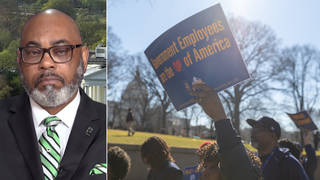
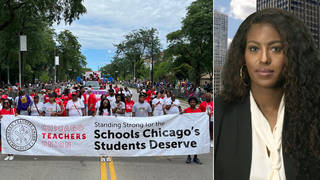
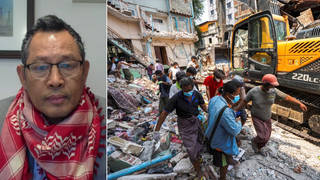
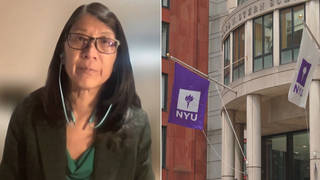





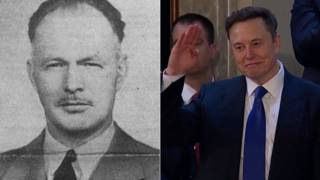
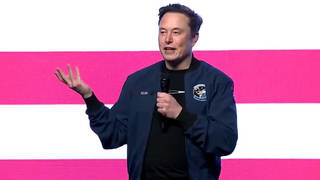
Media Options